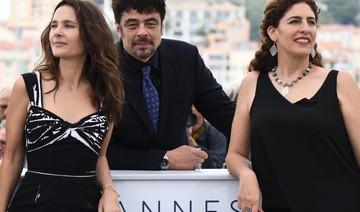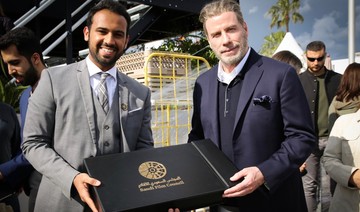CANNES: A boy who takes his parents to court for having him is one of a wave of Arab films making people sit up and take notice at the Cannes film festival.
Not since 1970 have two Arab films been in the running for the Palme d’Or top prize and female Arab directors are particularly making a splash this year.
Lebanese film-maker Nadine Labaki’s highly-anticipated third film “Capernaum” — about a 12-year-old boy with an axe to grind about being born into a miserable, loveless existence — has racked up a string of distribution deals ahead of its premiere late Thursday.
And two first-time female directors made impressive debuts with films about suffocating social conventions in Syria and Morocco.
But while the #MeToo movement continued to make waves, with several Hollywood actresses ditching frilly frocks for pants for their photo shoots, Arab film-makers appeared more concerned with social alienation.
Labaki, who set her first film “Caramel” in a Beirut beauty parlour, zooms in on neglected children and migrants in “Capernaum,” which has drawn comparisons with Charlie Chaplin’s story of a street boy, “The Kid.”
Labaki said she found the idea staring her in the face one night when she was driving home from a party.
“I stopped at a traffic light and saw a child half-asleep in the arms of his mother, who was sitting on the tarmac begging.”
The encounter spurred her to use a mostly hard-up, amateur cast including a Syrian refugee child for the lead role.
Going toe-to-toe with her and the likes of Spike Lee for the Palme d’Or — won only twice in 70 years by Arab directors — is A.B. Shawky, with his feel-good first feature about an Egyptian leper and his orphan friend, also played by amateurs.
A year after the award-winning “The Nile Hilton Incident,” a noirish tale of murder and corruption set during the 2011 revolution in Cairo, “Yomeddine” serves up less political fare.
“What I really want to do is highlight marginalized groups. I wanted to give a voice to people who don’t necessarily have anybody to speak for them,” said Austrian-Egyptian writer-director Shakwy.
Similarly, the Moroccan entry about an unmarried woman threatened with jail for falling pregnant is actually more preoccupied with class divisions.
The film shows a middle-class, 20-year-old from a Casablanca family scrambling to avoid bringing shame on her family after an unwanted pregnancy.
The real victim in the affair, however, is not the one left holding the baby.
“I found that the debate about the condition of women in the Arab world was being reduced to the issue of patriarchy and chauvinism, which to me falls short of the mark,” director Meryem Benm’Barek told AFP.
“Whether you are a man or a woman, what determines whether or not you are a victim is your social status,” she said.
Tunisia director Mohamed Ben Attia’s “Dear Son,” about a father trying to trace his son who has run away to join the Daesh group, is also more family drama than a political broadside.
The birthplace of the Arab Spring, which has been mired in economic crisis ever since, is estimated to have supplied more militants in Syria than any other country.
Ben Attia, who won acclaim with “Hedi,” about a young man torn between duty and passion in the wake of the Jasmine Revolution, tries to tease out the malaise behind the lure of Daesh for disaffected Muslim youths.
Like Labaki, Shawky and Benm’Barek, he believes the story could be transposed to many parts of the globe.
“There is a sort of misery, not only spiritual but emotional, not so much a thirst for ideology as a desire to walk away from this lifestyle... and all the values that are foisted on us.
“They could be living in Paris or elsewhere, it’s the same,” Ben Attia added.
War and unfulfilled desires also collide in the Syrian film, “My Favourite Fabric,” the first film of Paris-based Syrian director Gaya Jiji.
French-Lebanese actress Manal Issa puts in a standout performance as a sullen young Syrian fantasising about sexual abandon and escaping to the West as the war drums begin to beat in early 2011.
She carried her protest over onto the red carpet at Cannes, where she held up a placard reading “Stop the Attack on Gaza.”
Gaza also made it onto the big screen, in a documentary by Italian filmmaker Stefano Savona about the massacre of an extended Palestinian family in 2009 that received rave reviews.
With Saudi Arabia also unveiling big tax breaks for filmmakers at Cannes — Arab cinema may be entering a new era.
Arab cinema back with a bang; bringing lepers, lust and class conflict to Cannes
Arab cinema back with a bang; bringing lepers, lust and class conflict to Cannes
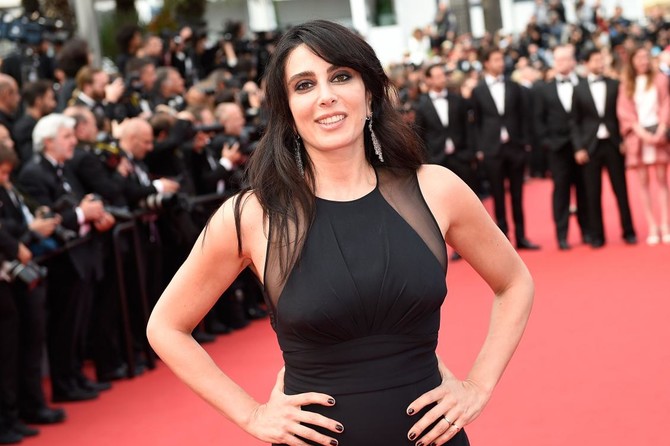
- Not since 1970 have two Arab films been in the running for the Palme d’Or top prize and female Arab directors are particularly making a splash this year.
- Nadine Labaki, who set her first film ‘Caramel’ in a Beirut beauty parlour, zooms in on neglected children and migrants in ‘Capernaum.’
Moroccan director Asmae El-Moudir joins Cannes’ Un Certain Regard jury
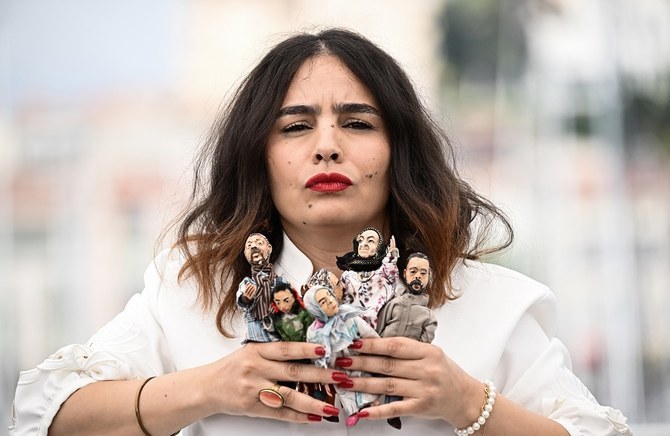
DUBAI: The Cannes Film Festival announced on Thursday that Moroccan director, screenwriter and producer Asmae El-Moudir will be part of the Un Certain Regard jury at the 77th edition of the event, set to take place from May 14-25.
She will be joined by French Senegalese screenwriter and director Maïmouna Doucouré, German Luxembourg actress Vicky Krieps and American film critic, director, and writer Todd McCarthy.
Xavier Dolan will be the president of the Un Certain Regard jury.
The team will oversee the awarding of prizes for the Un Certain Regard section, which highlights art and discovery films by emerging auteurs, from a selection of 18 works, including eight debut films.
El-Moudir is the director of the critically acclaimed film “The Mother of All Lies.”
The movie took the honors in the Un Certain Regard section, as well as winning the prestigious L’oeil d’Or prize for best documentary at the festival in 2023. The film explores El-Moudir’s personal journey, unraveling the mysteries of her family’s history against the backdrop of the 1981 bread riots in Casablanca.
El-Moudir is not the only Arab joining the Cannes team.
Moroccan Belgian actress Lubna Azabal this week was appointed the president of the Short Film and La Cinef Jury of the festival. The La Cinef prizes are the festival’s selection dedicated to film schools.
Second Ritz-Carlton Reserve in Saudi Arabia planned for Neom
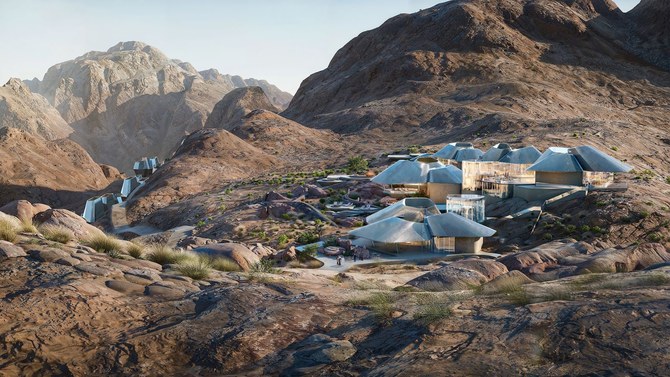
DUBAI: Marriott International, Inc. announced on Thursday that it has signed an agreement with Neom to open its second Ritz-Carlton Reserve in Saudi Arabia.
The hotel is anticipated to open in Trojena, a year-round mountain destination located in the northwest region of the country.
The resort is expected to feature 60 expansive one-to-four-bedroom villas. Plans also include a range of amenities including a spa, swimming pools and multiple culinary venues.
Chadi Hauch, the regional vice president of Lodging Development Middle East, Marriott International said in a statement: “Together with Neom, we look forward to bringing this ultra-luxury experience to Trojena. This signing also marks an important addition to our portfolio in Saudi Arabia where we continue to see a strong demand for our luxury brands.”
“Trojena is a rare destination, and we are delighted that Ritz-Carlton Reserve has hand-picked the mountains of Neom for their next property. Together we will create an experience that can’t be recreated anywhere else. Our visitors and residents will experience a sanctuary that will capture the magic of Saudi Arabia, embracing ultimate luxury in an unforgettable location,” executive director and Trojena region head Philip Gullett said in a statement.
Trojena, one of the flagship developments within Neom, is being developed and positioned as a year-round adventure sports destination that will include activities such as skiing, water sports, hiking and mountain biking. It will also include apartments, chalets, retail, dining, entertainment, leisure, sports and recreational facilities, and other hospitality offerings, including a W Hotel and a JW Marriott Hotel.
Ritz-Carlton Reserve currently boasts a collection of only six properties in destinations including Thailand, Indonesia, Puerto Rico and Mexico.
The Arab world at the Venice Biennale: Artists explore themes of identity, immigration, history
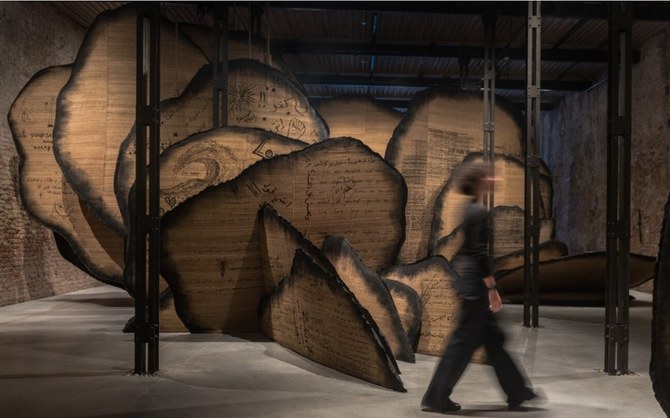
VENICE: No event in the international art scene is more anticipated, or debated, than the Venice Biennale. This year’s edition, “Foreigners Everywhere,” curated by Adriano Pedroso from Brazil, features 331 artists and 86 nations, including four Gulf countries as well as Lebanon and Egypt.
Saudi Arabia
Women’s voices chanting in unison fill the air of the Saudi Pavilion at Venice this year. “Shifting Sands: A Battle Song” was created by Saudi artist Manal AlDowayan, and hundreds of women from across the Kingdom participated in its creation. The exhibition, which includes large-scale installations in the form of desert roses filled with writing and drawings by the Saudi female participants whom AlDowayan worked with, aims to showcase the evolving role of women in the Kingdom while also striving to dispel media narratives that have long defined them. The chanting is derived from traditional battle songs once performed by Saudi men before they went into battle. Here they are chanted by women in a powerful chorus of strength and resilience, backed by recordings of the wind passing through sand dunes. The work, AlDowayan tells Arab News, “is about change, subtle changes — like those of a sand dune — the surface changes, but the core stays the same.”

UAE
Emirati artist Abdullah Al-Saadi is presenting “Sites of Memory, Sites of Amnesia” at the National Pavilion of the United Arab Emirates. It’s an introspective show consisting of drawings, sculptures, paintings and installations charting Al-Saadi’s travels around his homeland. “Traveling and understanding the natural world around me has always been an important part of my work,” Al-Saadi, who has even used rocks from the Emirates as his ‘canvas’ for some of the works, told Arab News. “Through this presentation in Venice, I hope visitors will enjoy tracing the travels I have taken over the past few years and also think about the world around us, and our place within it.”
Visitors will also be presented with gifts: maps and scrolls in colorful traditional chests from the region, which will be removed and presented to guests by actors from the UAE.
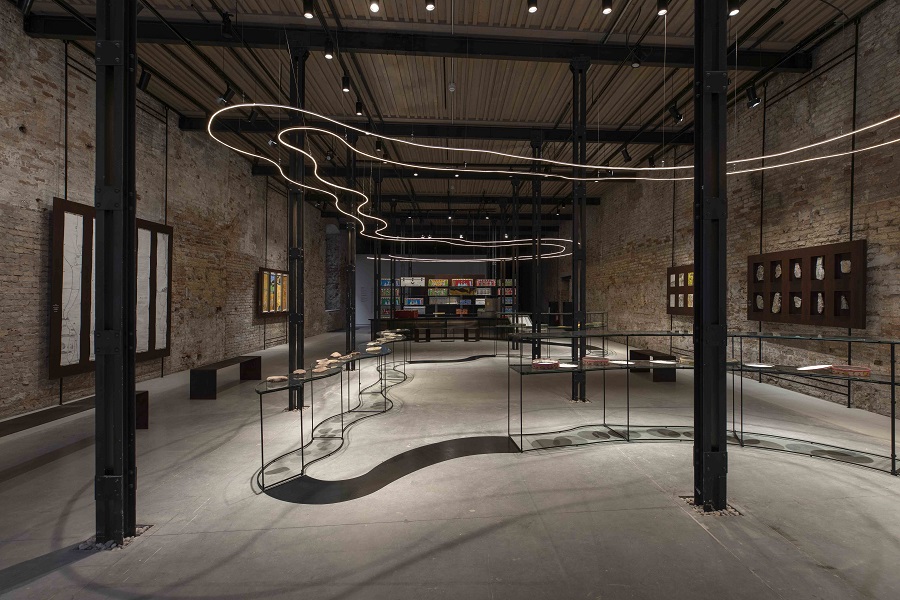
Qatar
While Qatar doesn’t have a national pavilion at the biennale, it is presenting “Your Ghosts Are Mine: Expanded Cinemas, Amplified Voices” — a group show of films by artists from across the Arab world, Africa and South Asia, as well as video installations from the collections of Mathaf: Arab Museum of Modern Art and the Art Mill Museum (scheduled to open in 2030). All the films were backed by the Doha Film Institute.
“For me, it was important to show movies reflective of the theme of the biennale — so, revolving around immigration, foreigners, personal diaries and self-portraits and stories from women — all coming from independent (artists) in the Global South, whose voices are not always shared,” the Paris-based curator Matthieu Orlean told Arab News.
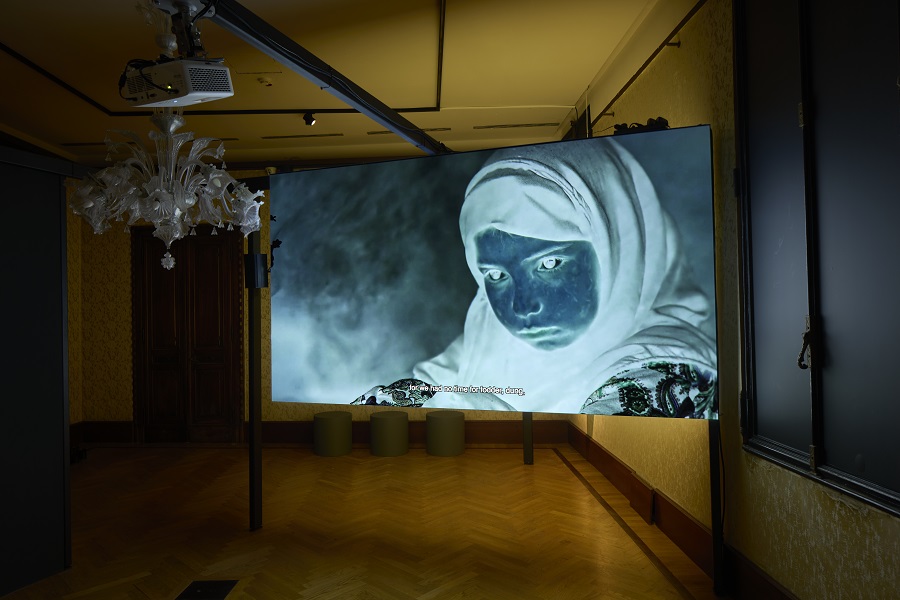
Egypt
Alexandrian-born artist Wael Shawky has created “Drama 1882,” a 45-minute film for which he also composed the music, for Egypt’s national pavilion, which — in the first week of the biennale at least — has proved to be one of the most popular pavilions at this year’s event.
The film is based around Egypt’s nationalist Urabi revolution against imperial influence in the late 19th century and Shawky uses historical and literary references as starting points from which to weave together a story that fuses fact, fiction and fable, while also exploring national, religious and artistic identity.
“I worked with performers who enacted a play in a theater for the film,” Shawky told Arab News. “The film strives in part to connect the idea of history to drama — drama regarding the connection to catastrophe and drama regarding cynicism. I like to analyze the authenticity of history, especially Egyptian history. When one makes films about history there is this gap between truth and myth.”

Lebanon
Lebanese artist Mounira Al-Solh’s multimedia installation “A Dance with Her Myth” combines drawing, painting, sculpture, embroidery, video, and audio, and guides viewers through ancient Phoenicia. The piece, Al-Solh explains to Arab News, is inspired by the tale of Europa, the daughter of a Phoenician king who was abducted from the city of Tyre in Lebanon by the Greek god Zeus, who had transformed himself into a white bull to trick her into riding him, then took her off into the sea.
“The (work) pays tribute to the ancient multicultural heritage of Lebanon,” Al-Solh says.
In the center of the pavilion is an unfinished boat, that Al-Solh says references “the tension that women still face today, despite their emancipation.”
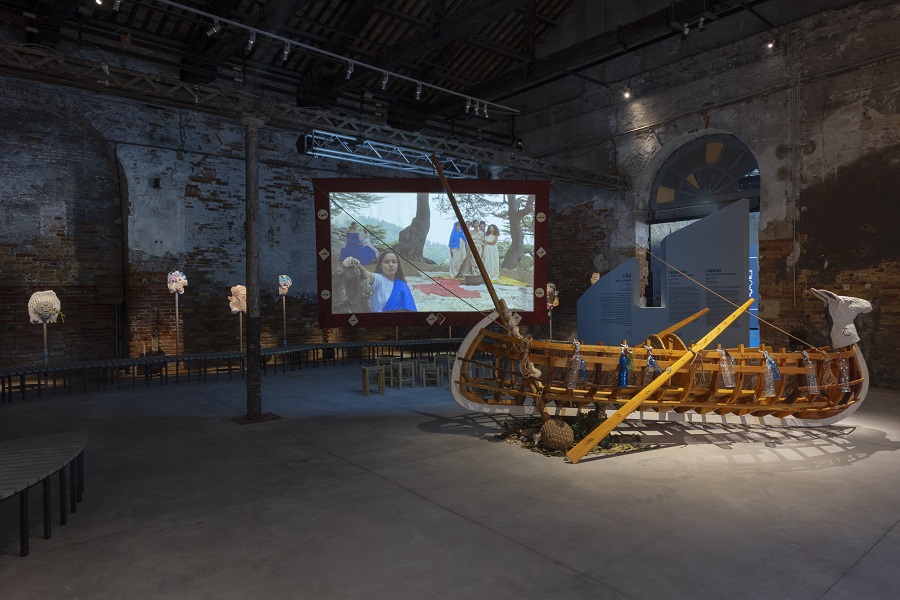
Oman
Oman’s second participation in the biennale, is an exhibition titled “Malath — Haven.” It includes work from five Omani contemporary artists: Ali Al-Jabri, Essa Al-Mufarji, Sarah Al-Aulaqi, Adham Al-Farsi and Alia Al-Farsi (who also curated the show). “We used the word ‘haven’ in the title because, since antiquity, foreigners — including the Romans, Portuguese and Indians — have visited Oman,” Alia Al-Farsi told Arab News. The works on display — from Al-Farsi’s own colorful and expressive mixed-media murals (such as “Alia’s Alleys,” pictured here) to Al-Aulaqi’s “Breaking Bread,” which includes a large sculpture of a niqab made from silver spoons — reflect both traditional and contemporary life in Oman.
“As an Omani creative with an international background, my aim was for the exhibition to serve as a sanctuary for visitors and travelers, allowing stories to unfold and intertwine, mirroring how our country finds its richness in intercultural dialogue,” the curator said in a statement.
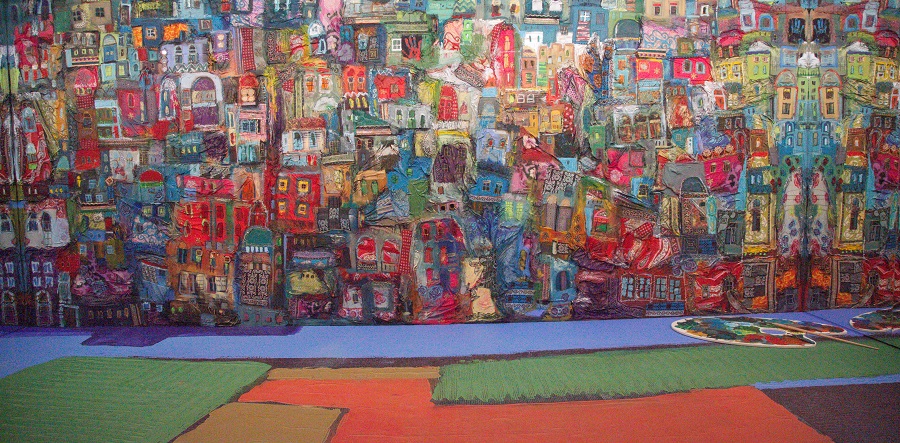
Arab-American Heritage Month: Sama Alshaibi — ‘I’m trying to change this idea of what an Arab woman is’
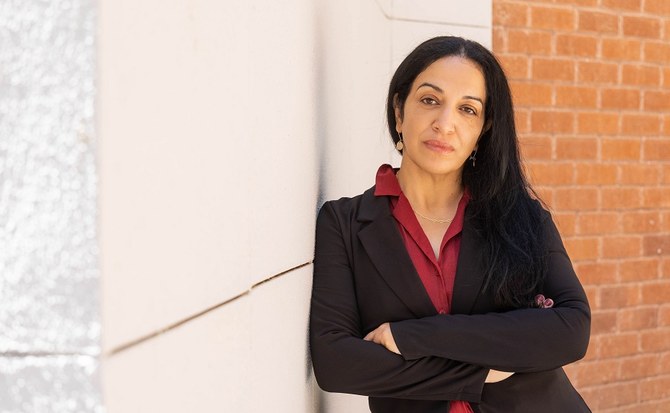
DUBAI: The fourth in this year’s series focusing on contemporary Arab-American artists in honor of Arab-American Heritage Month.
Born in Basrah to an Iraqi father and a Palestinian mother, Sama Alshaibi is an Arizona-based professor and artist who has mostly devoted her 20-year career to video, photography and performance art.
During the Iran-Iraq war of the Eighties, Alshaibi and her family moved around the region, living in Saudi Arabia, the UAE, and Jordan, before eventually settling in the American Midwest when she was 13 years old.
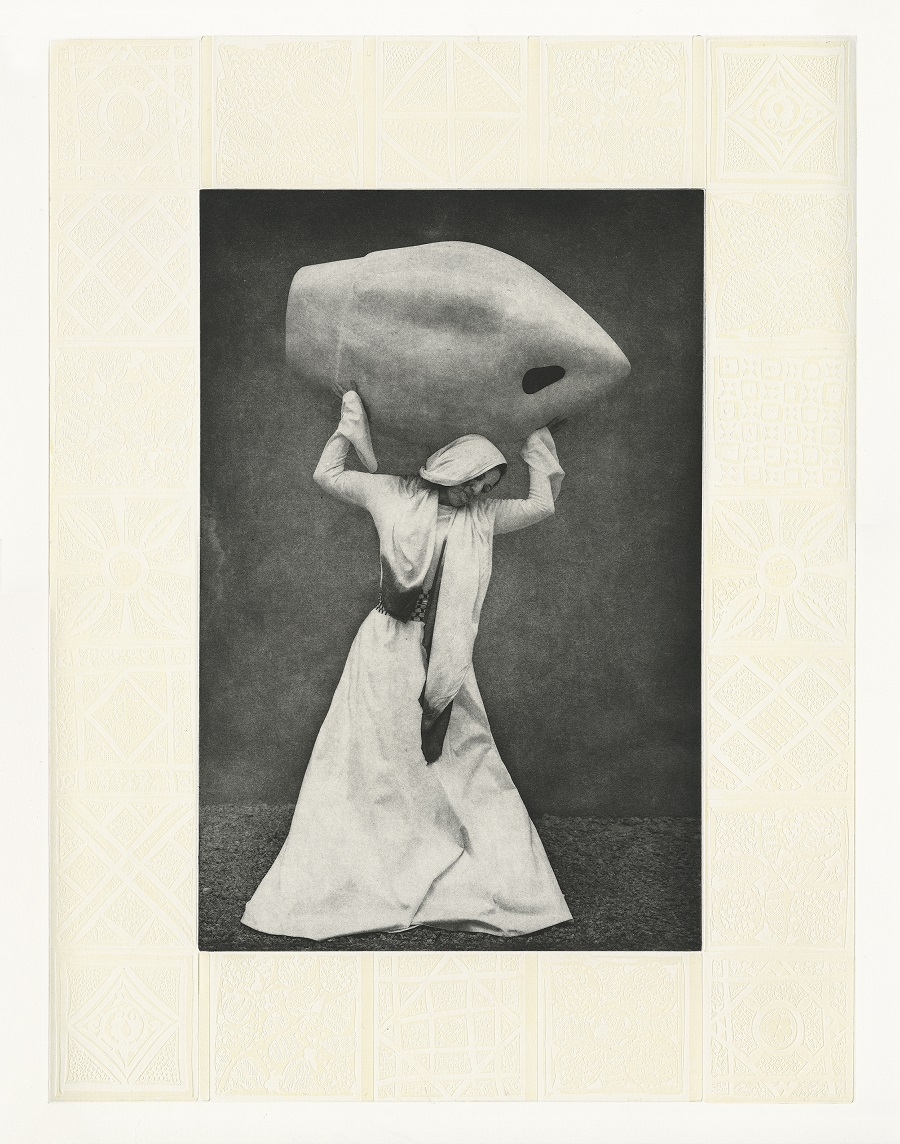
“Growing up in the United States was strange. We were a ‘different’ family in Iowa and there wasn’t a lot of diversity. But I grew up in a place with nice people,” Alshaibi tells Arab News from Bellagio, Italy, where she is doing a residency at the Rockefeller Foundation.
But she also says there were obstacles, mainly formed by major political events that impacted her. “It was challenging, because of where I’m from,” she says.
Alshaibi’s work is largely inspired by her Arab roots. “Arts were so revered in my family,” she says. “I don’t even know if I would be making art if it wasn’t for my heritage.” It was her father, an avid photographer, who taught her to use a manual camera. She aspired to become a photojournalist herself — inspired by 20th-century African-American photographers, notably Carrie Mae Weems and Lorna Simpson, who documented Black culture in their imagery.
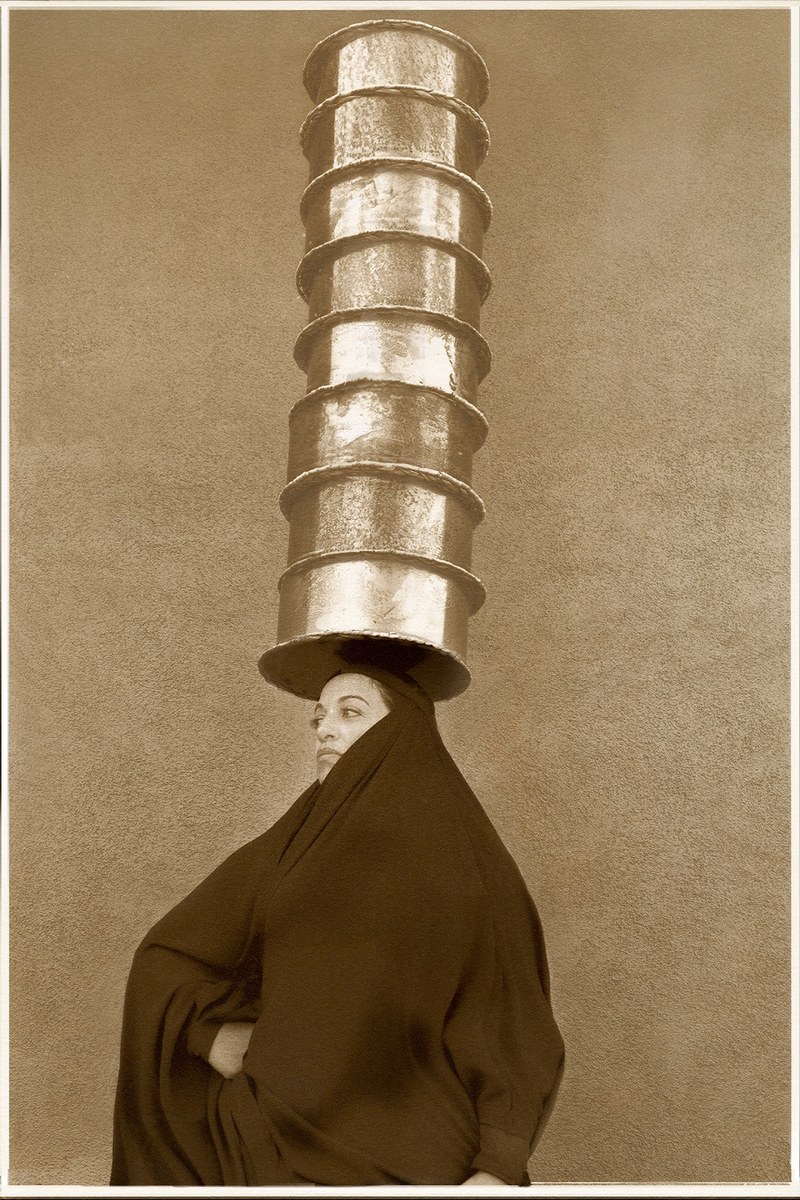
Many of her images are portraits of herself wearing, for example, traditional Middle Eastern garments, referencing romanticized Orientalist portrayals of women, and in the end, challenging them.
“I’m trying to change this idea of what you think an Arab woman is,” she explains. “I started seeing the power of communication, of taking political or social issues and using your body, your performance, your environment, to address them.”
One of Alshaibi’s best-known series is called “Carry Over,” in which she photographed herself carrying large objects (or Orientalist props), such as a tower of container tins or a water vessel, above her head. The images poetically show a woman’s endurance and comment on a collective history, affected by colonialism and cultural loss.
“I’ve always been interested in the notion of ‘aftermath’ — what happens after the destruction of your environment,” explains Alshaibi. “It gets you to the question of what we can’t hold onto anymore.”
REVIEW: ‘Returnal’ — a thoughtful and challenging sci-fi adventure
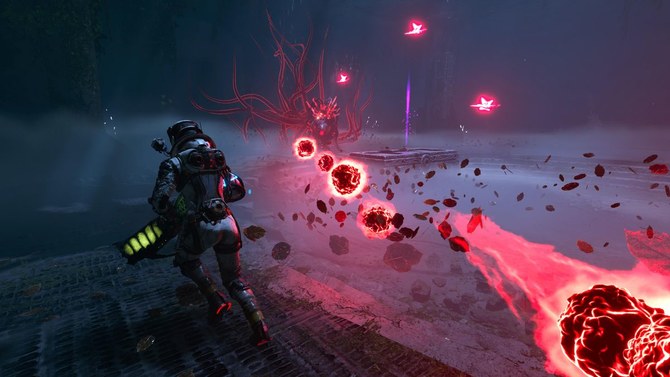
LONDON: Right from the start, before you even take control of Selene Vassos, a reconnaissance scout who has crash landed on a prohibited and mysterious planet, you are warned that “Returnal” (available originally for PS5 but now PC too) is “intended to be a challenging experience.” Such difficulty may deter the casual gamer used to a steady progression of character and exploration through a games environment. However, “Returnal” is a thoughtful and rewarding adventure that lays claim to much originality of thought in its set up. The key theme is that when you die, you return! But not to the same environment that you were in before. Instead, each new cycle postures new challenges and progress can only be made by unlocking upgrades that allow you to make more meta progress in Selene’s journey.
Selene herself is a super professional, unfazed character who doesn’t appear too bothered when she comes across a body of her former self that died in this strange world where the laws of physics and time appear not to apply. Staying alive is obviously crucial, particularly as it allows her to retain better weapons for longer. In addition, avoiding damage allows for boosts of agility, vision and more, making for a more lethal Selene. The environment is varied and surprising with each incarnation and the weapons on offer come complete with a range of exciting alternative fire mechanisms such as homing missiles or laser-like items. A hostile environment where even plants are a threat to life is mitigated by your technology, the core of which you can improve despite the reset of deaths, through fancy smart “xeno-tech” that becomes integrated with alien kit left around.
There is a paradox in “Returnal” described by Selene herself that she is trapped in an environment that is “always the same, always changing,” which literally makes no sense. Players have to be patient in the early chapters getting used to the sapping dynamic of death and return. Once that makes more sense, the loneliness of both her alien environment and the impossibility of even dying to escape it make for a pretty special atmosphere that a smart shooting engine then complements.


